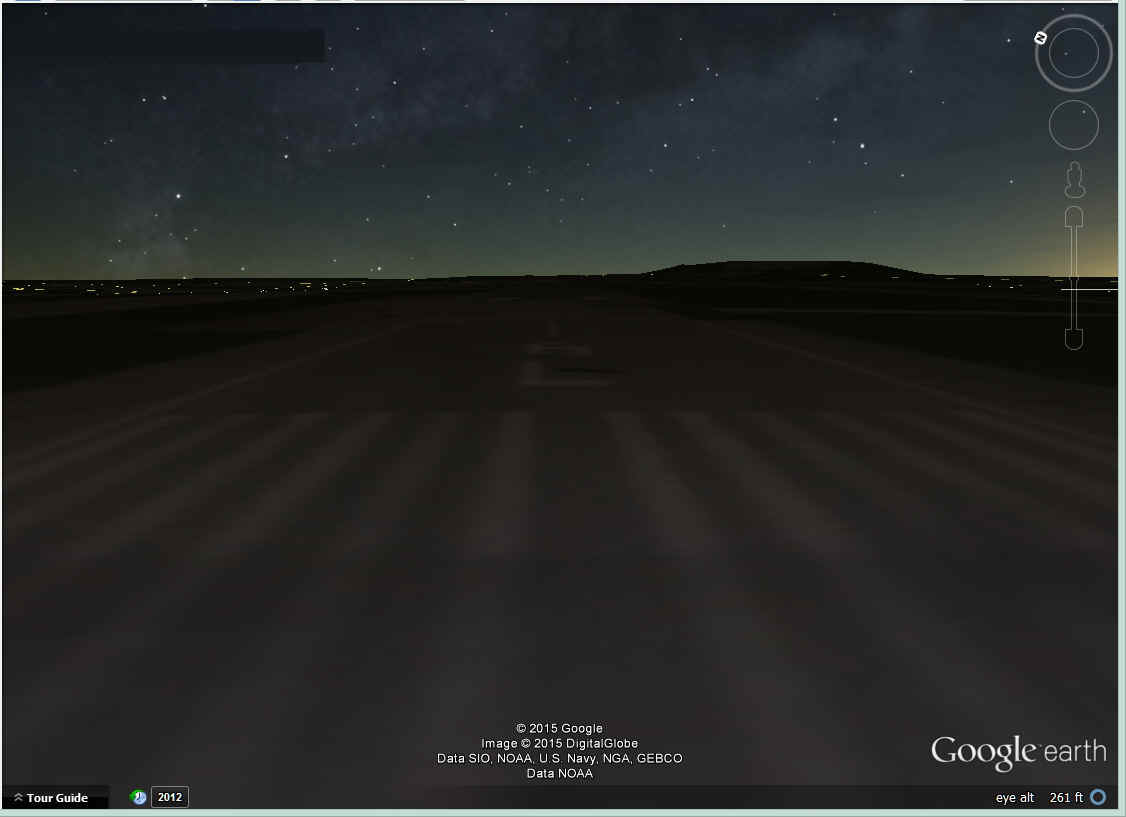
Guam to Wake Island · · PAGE 13.
April 12, 1964: From Guam to Wake Island was
mostly a daytime flight of 1,502 miles with an early morning departure before sunrise and
a night landing at Wake Island on the same day.

Her course line begins here and turns on course for Wake Island after leaving
the runway.
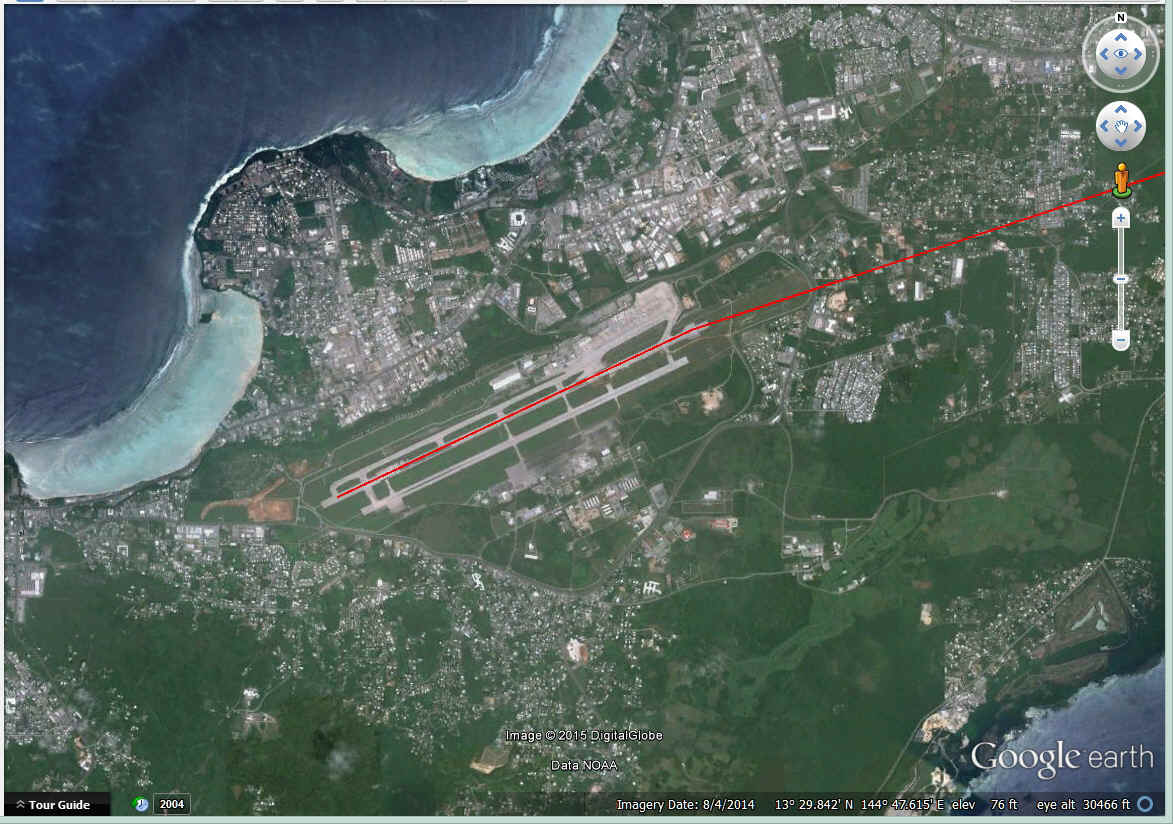
Jerrie writes the opening paragraphs of Chapter 21 with no hassles from
bureaucrats, all the right help from the US Navy, Pan American, easy fueling, and the
weather report ready and waiting. She paid for the fuel with her "carnet"
(credit card today), signed her name, and took off at 5:30 AM Guam Time. She was on
the ground for 9 hours 25 minutes, and only four of those hours were sleeping. The
island of Guam is barely 30 miles from north to south. It is the largest of the
Marianas Islands at the southern end of the island chain.
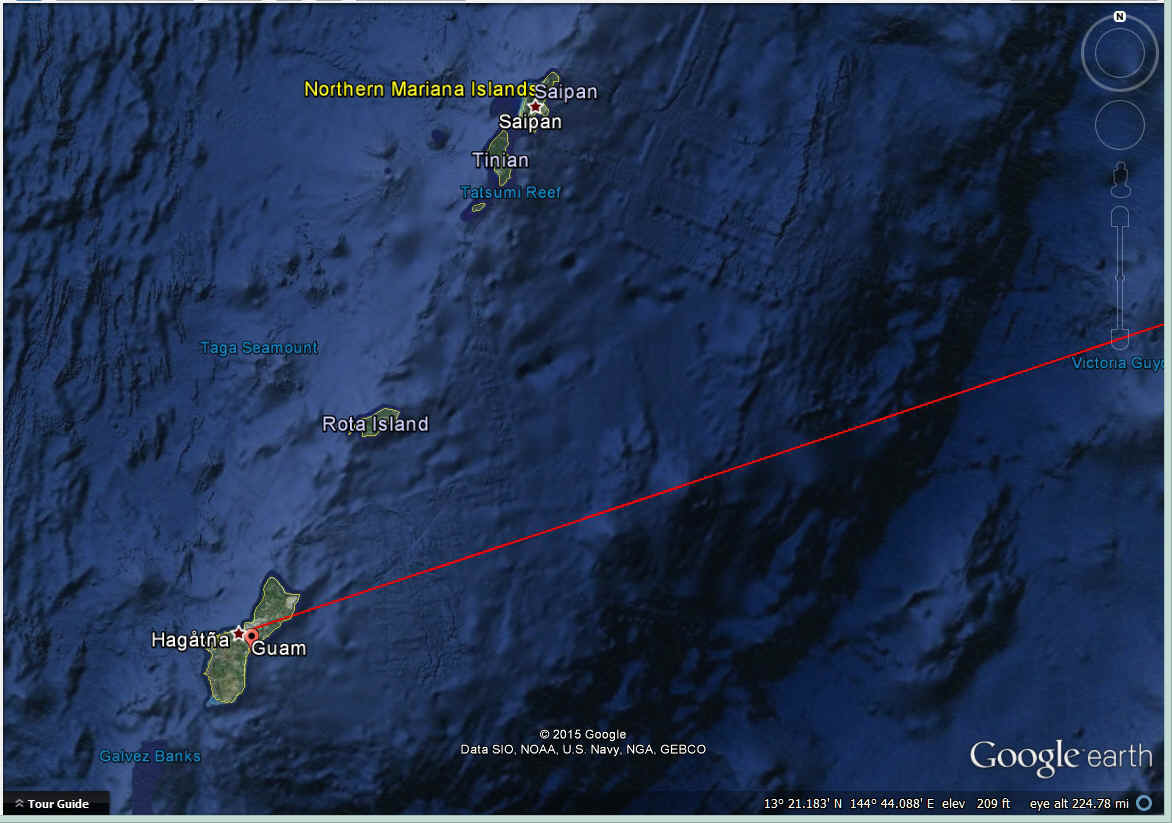
She climbed to 11,000 feet and settled into cruise mode with the autopilot
holding her course heading of 70 degrees. She describes her morning routine of
cleaning up the cabin to get everything in place before having a food bar and some water.
Her fuel management would be one of the things that would result in moving her charts and
papers out of position to reach the fuel pump switches. The navigation was easy with
the NDB at Guam not fading out before she tuned in the NDB at Wake Island. Less than
four hours after her takeoff from Guam, she saw an airplane below her heading the other
way toward Guam. At least they were both on the same course line out in the middle
of the Pacific Ocean.

She had contacted the Wake Island control tower when she was approaching from the west for a landing at NIGHT. The controller provided clearance to descend to reach pattern altitude. The closer she came, the worse the radio reception became. She had the airport in sight and was about to ask the man in the control tower for a visual approach when the radio became unreadable. She set up for an NDB approach. The Wake Island airport shot up some flares to help guide her since the low clouds over the island restricted visibility. The aerial photo below shows the details of the islands of the atoll as seen from the west in clear daytime conditions.
She flew the instrument approach to get lined up with the runway before
descending through the layer of clouds. The runway was lit up and she finished the
landing with a visual approach. She touched down with a "little jolt" that
caused the radio to clear up the voice of the controller. Several hundred people,
about half the population of the island were there to greet her.
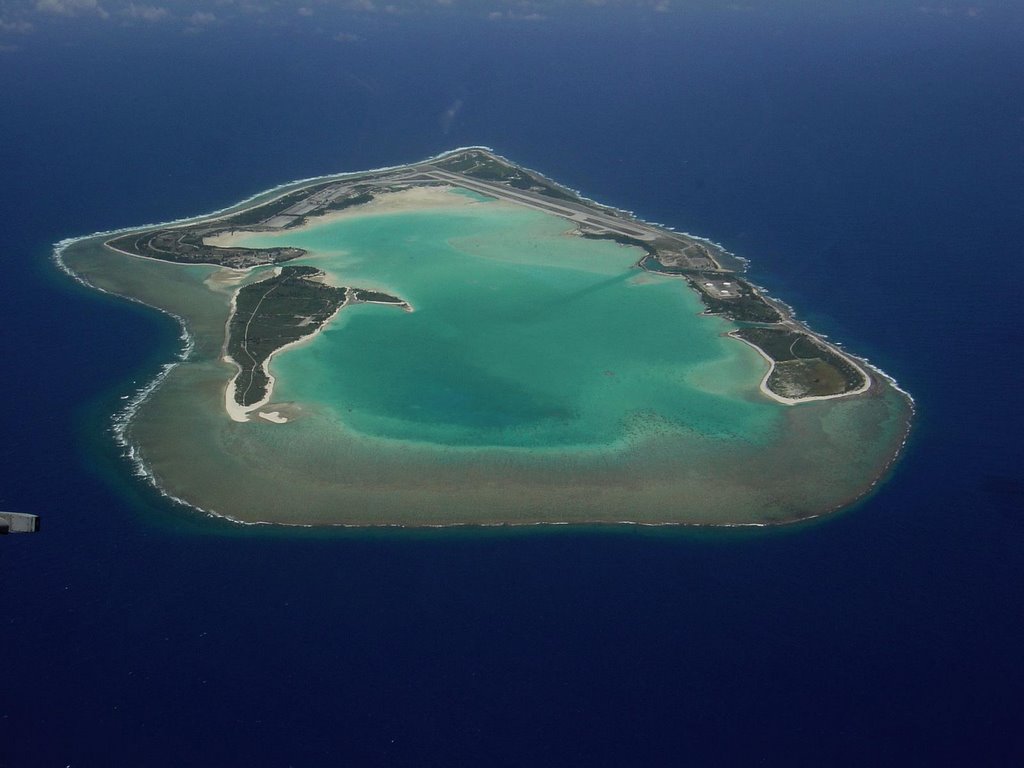
The local Pan Am manager was her NAA observer on Guam. He put Charlie in
a hangar for the night. He would also have the communications radio checked
out. He told her the flashes of light in the sky were flares they sent up through
the low cloud layer were to guide her to the airport. Hal Sellers with the FAA was
the manger of Wake Island in 1964. He took Jerrie to the Pan Am restaurant in the
terminal which had been kept open late for her arrival. Hal took her to a place to
sleep as there was no hotel on the island since the old Pan Am clippers stopped flying the
Pacific routes. She described a duplex that probably looked like this one captured
from the video you can jump to later down this page.
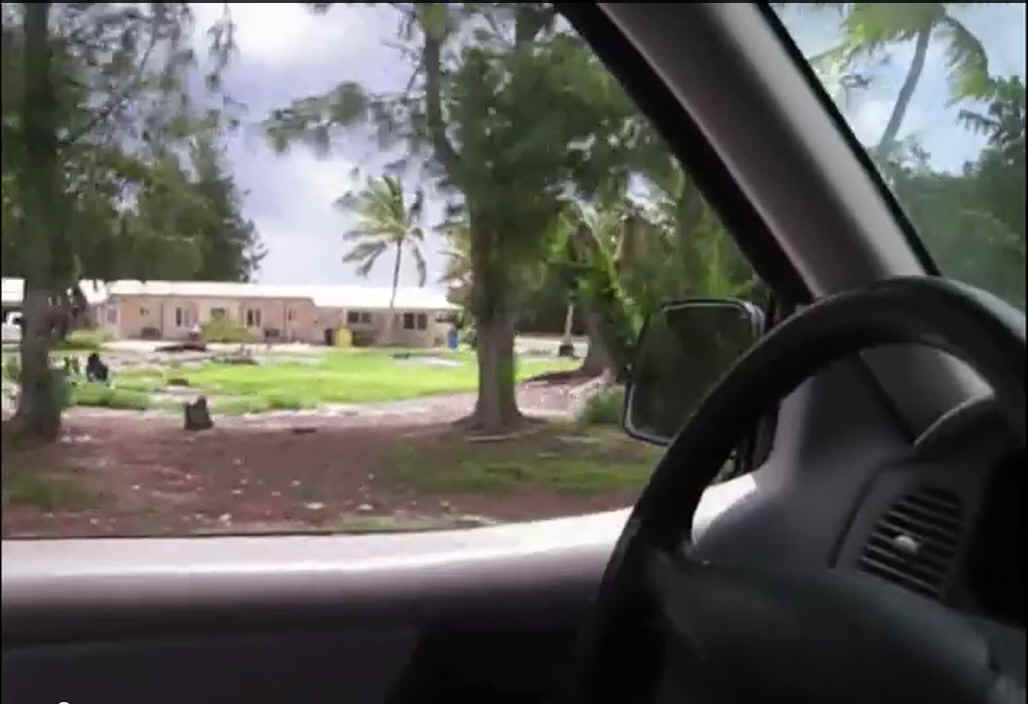
In 1964, the island was under the control of the FAA. Now it is
controlled by the US Air Force. She had a chance to sleep late the next morning and
walk on the beach.
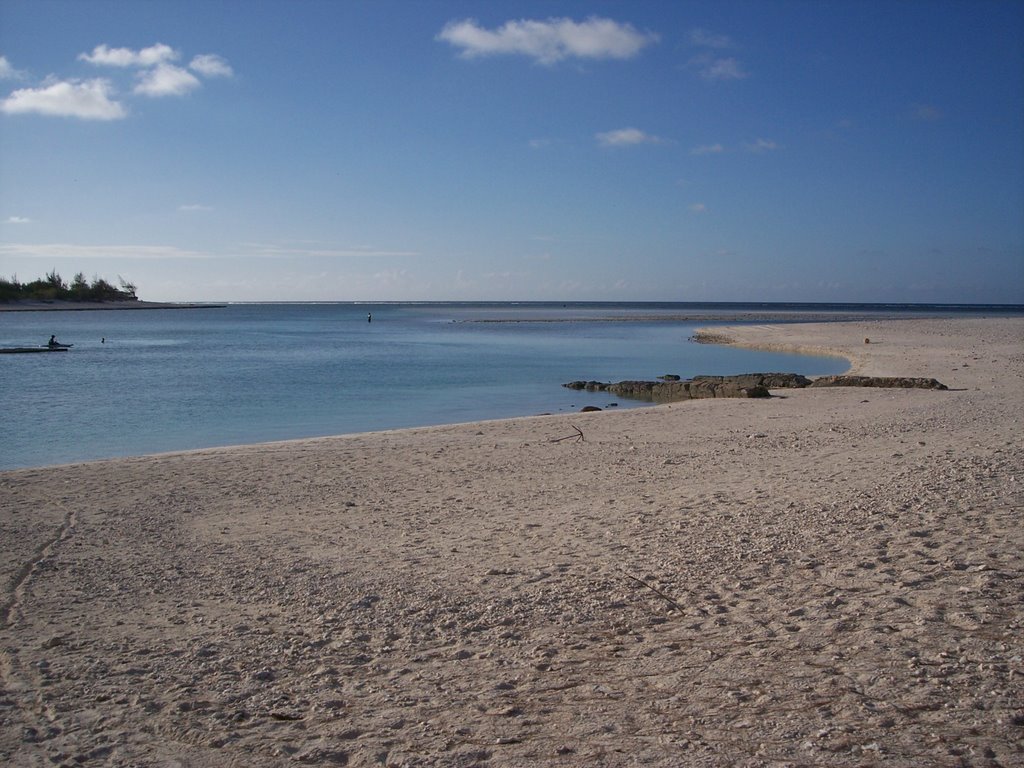
She had the much needed rest after the two long flights from Manila and Guam on consecutive days. This building is the bowling alley seen in the 1964 photo below. A champagne lunch was held in her honor here. She felt like a pampered first class passenger on a Pan Am flight. "The menu was chilled Ayala champagne, cream of crabmeat soup, shrimp salad, chicken a la king, rolls, ice cream, coffee and wine, cognac, or brandy. The service, sparkling glassware and china, snow-white linen, and the food were all excellent. I was amazed to find such elegance in that faraway place"
I used software to "clean" the dirt off this photo below and had a
chance to examine it closely. At this scale, you might miss the antenna mast
sticking up near the blue station wagon close to the building. It is similar to a
ham-radio beam antenna, probably for the 10-meter amateur radio band at 28 MHz. The
white station wagon is a 1960 Ford. This building was completely destroyed by
typhoon Ioke in 2006.
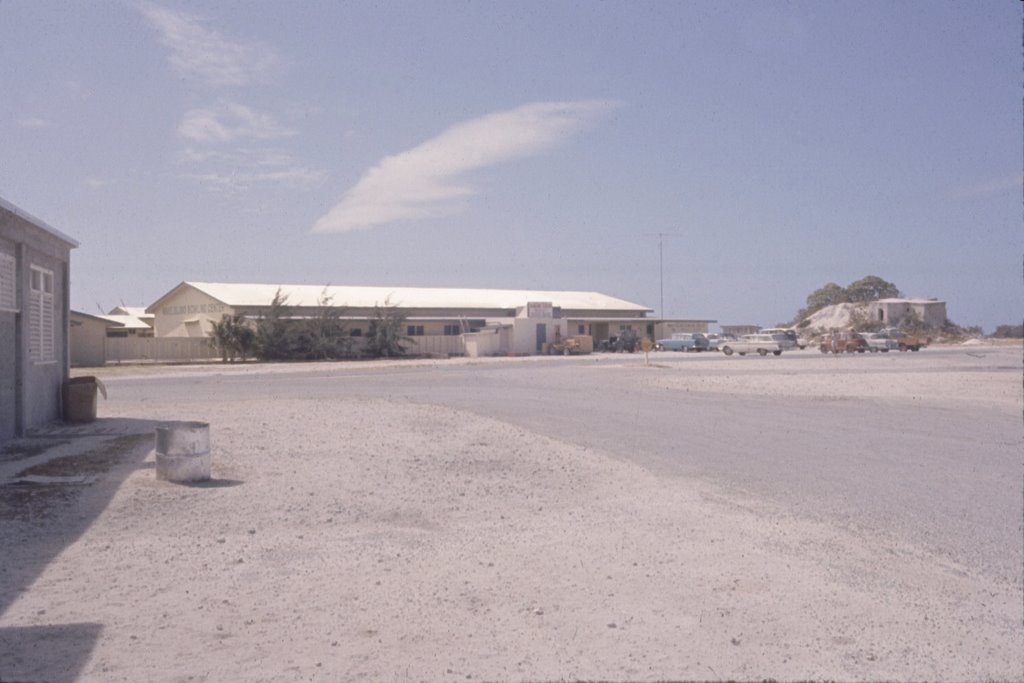
Here is the chow hall for everybody not dining at the restaurant in the bowling
alley building. It was not far from the building seen above.
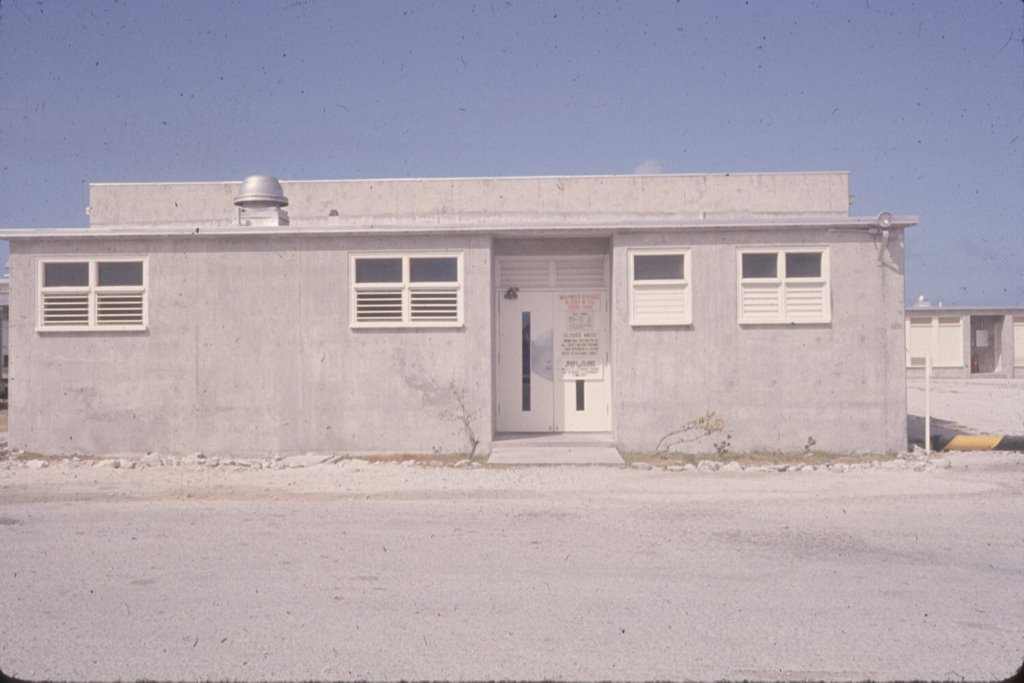
Jerrie finished all her paper work and the fuel has been loaded, but the
weatherman advised against a takeoff until 10:30 PM. A strong weather front was out
over the ocean between Wake Island and Hawaii. He suggested the late departure to
put her near the weather front after sunrise, making it easy to see and avoid the nasty
weather as needed. Jerrie likes to wear slacks as seen here, but she is always
dressed in her shirt and blouse when she flies.
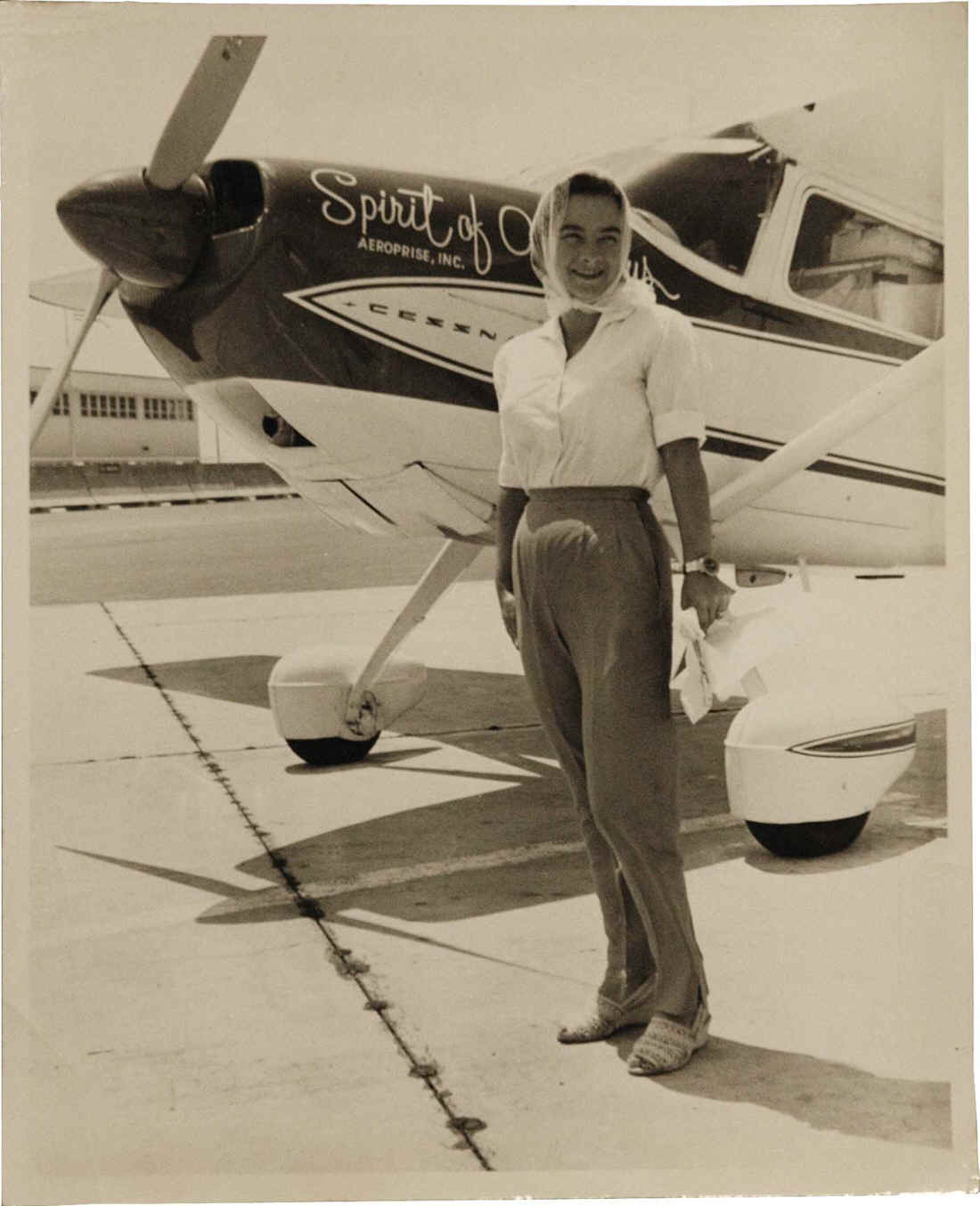
Here is the terminal building at Wake Island in recent years, rebuilt after
typhoon Ioke. This is the front side, you will see the back side from a video linked
below.

There are many more photos found via this WEB LINK. And there are more photos and information about Wake Island on this web site of Kevin McGrath, a contractor employee that did work there before and after typhoon Ioke hit the island.
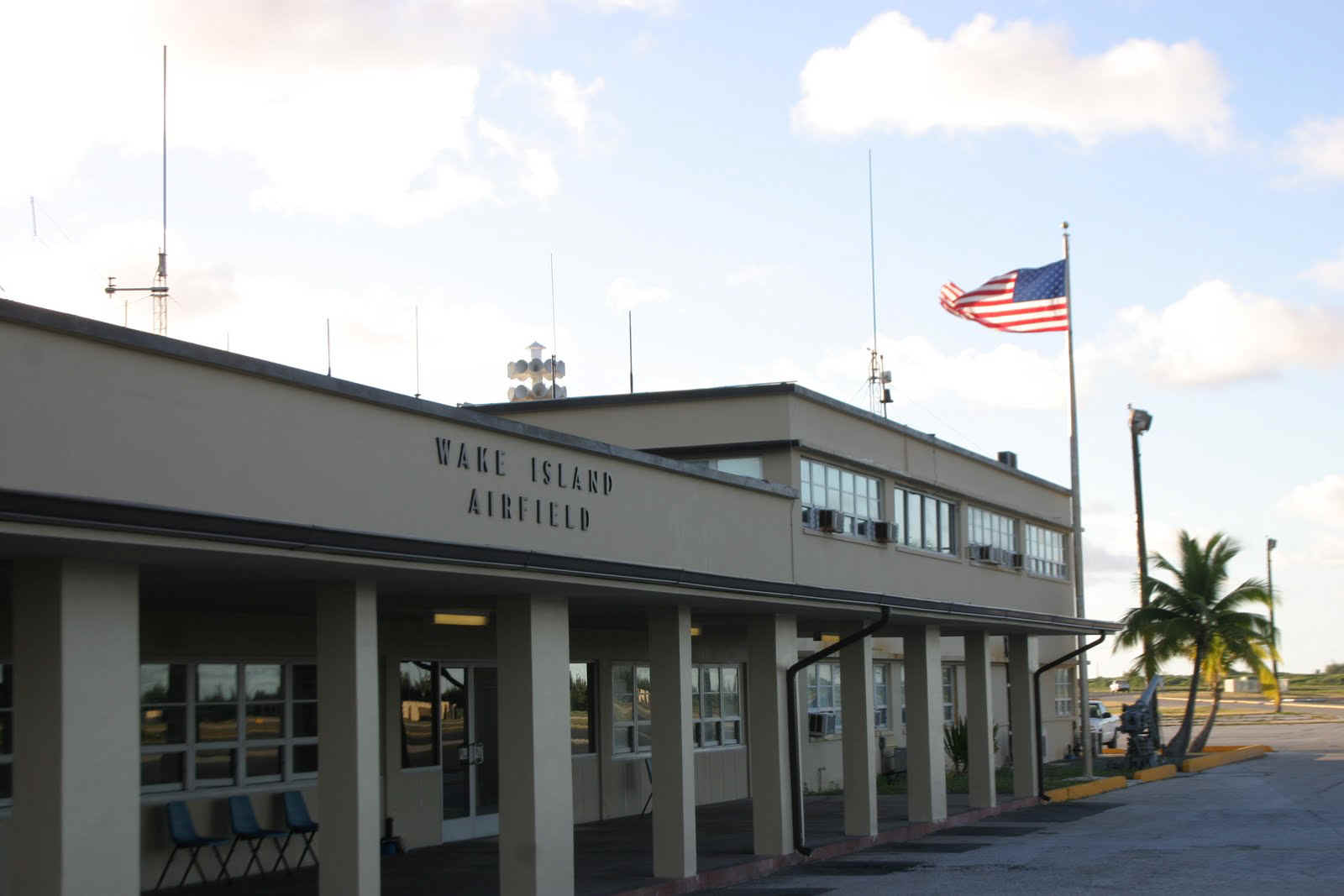
With the extra time before her departure, her little bit of tourism was to see
some old ruins of a Japanese gun emplacement from World War II. That is Hal Sellers
with the FAA showing her some of the sights on the island. The highest point on the
island is only 27 feet above sea level.
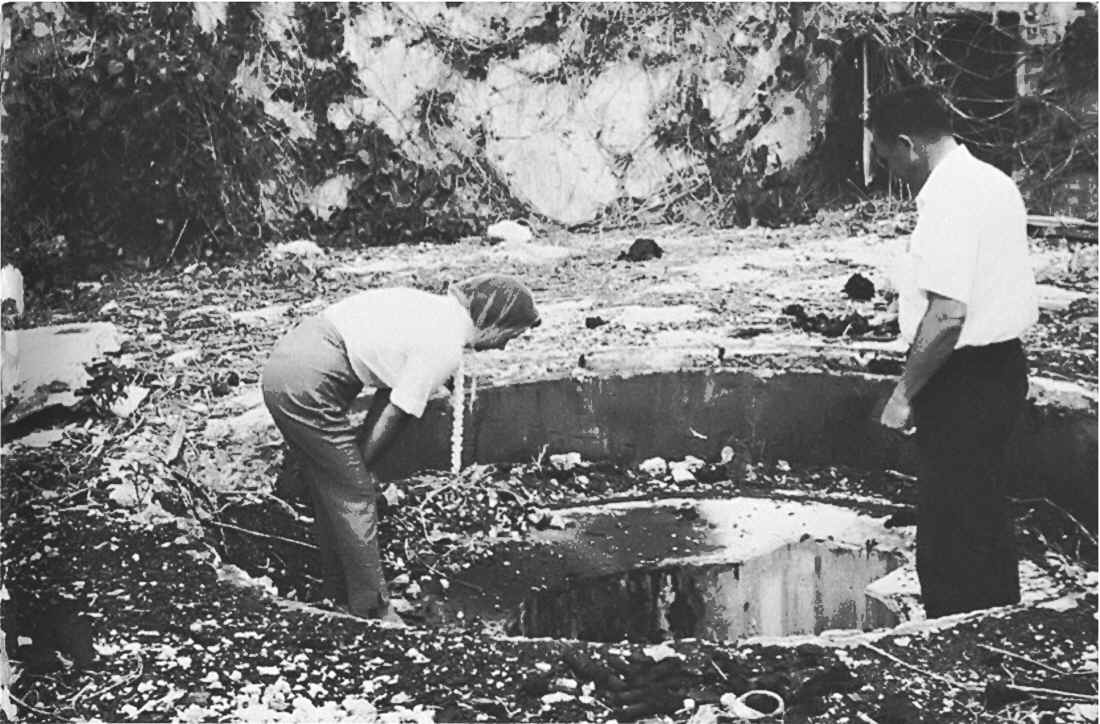
This Google Earth image from 2002 shows a wooden bridge from Wake Island to
Peale Island. It was destroyed by a category FIVE Typhoon in 2006.
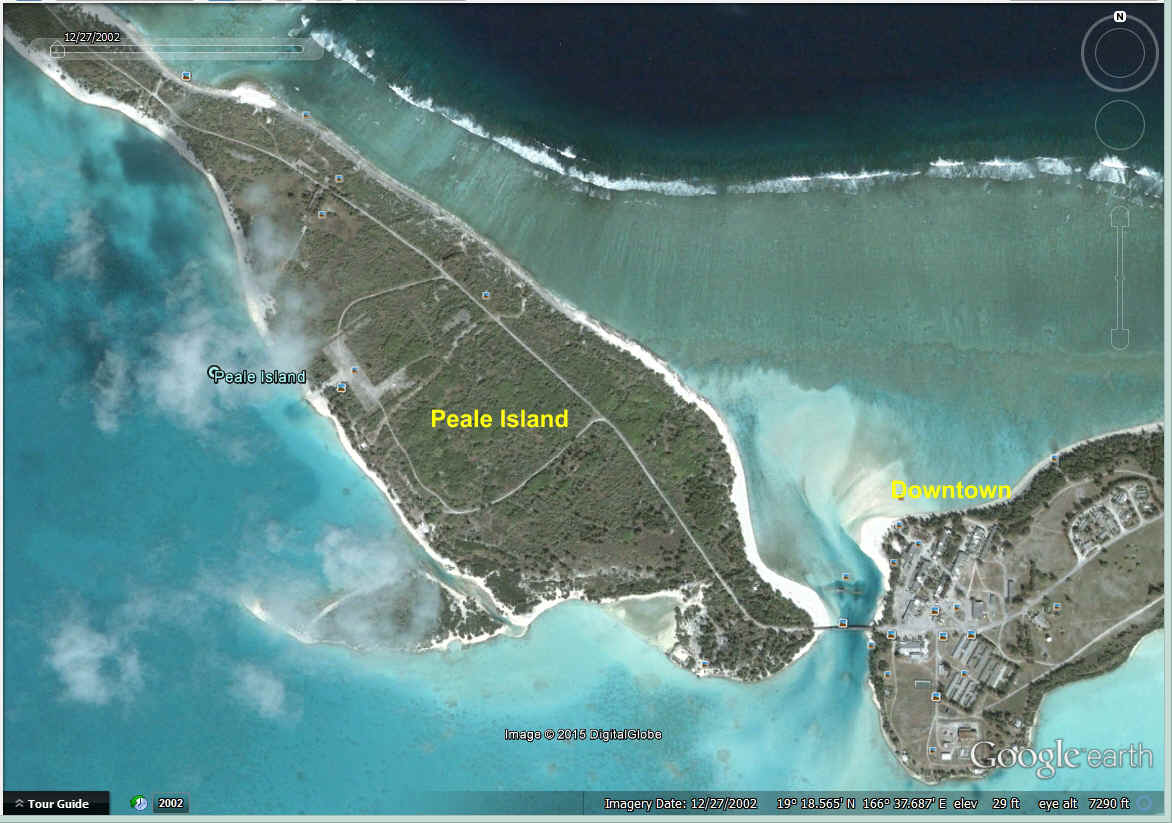
Here is a photo of the bridge as seen from the end on Peale Island. This
was taken in the year 2000.
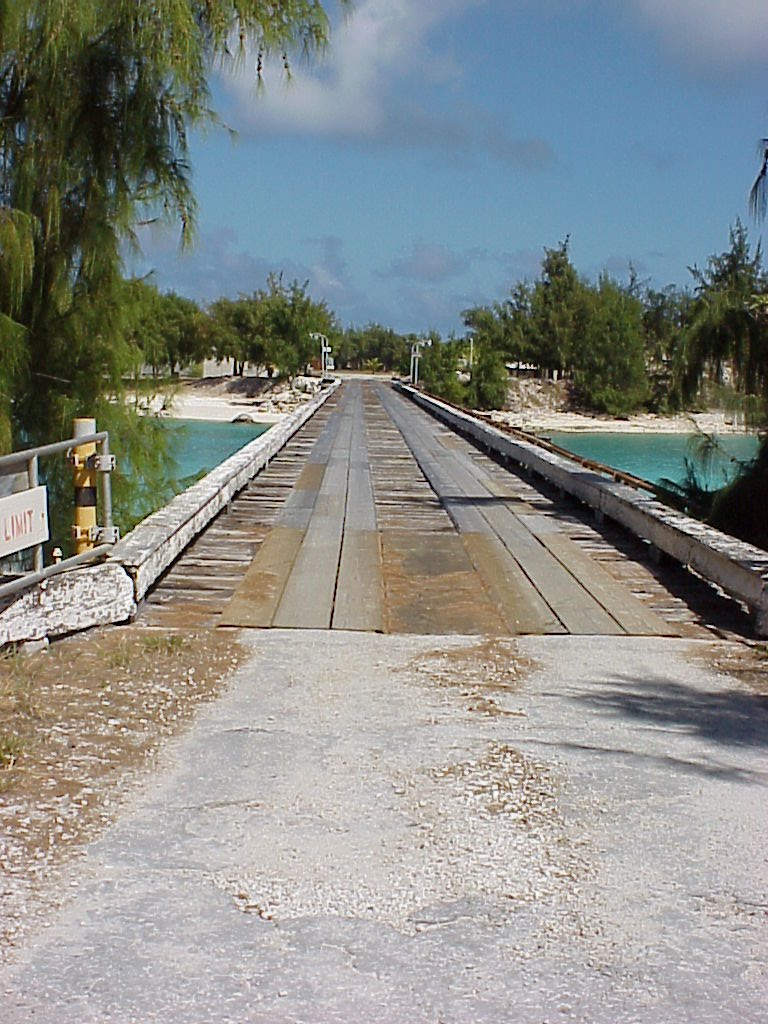
The bridge was wiped out by typhoon Ioke in 2006, but is was there in 1964 when
Jerrie visited, and in the 2002 Google Earth image above. This photo was taken from
Peale Island looking back toward "Downtown" on Wake Island. The mode of
transportation to Peale Island today is a kayak like the one seen here.

This photo is seen from the beach looking toward Peale Island and toward the
center of the lagoon.
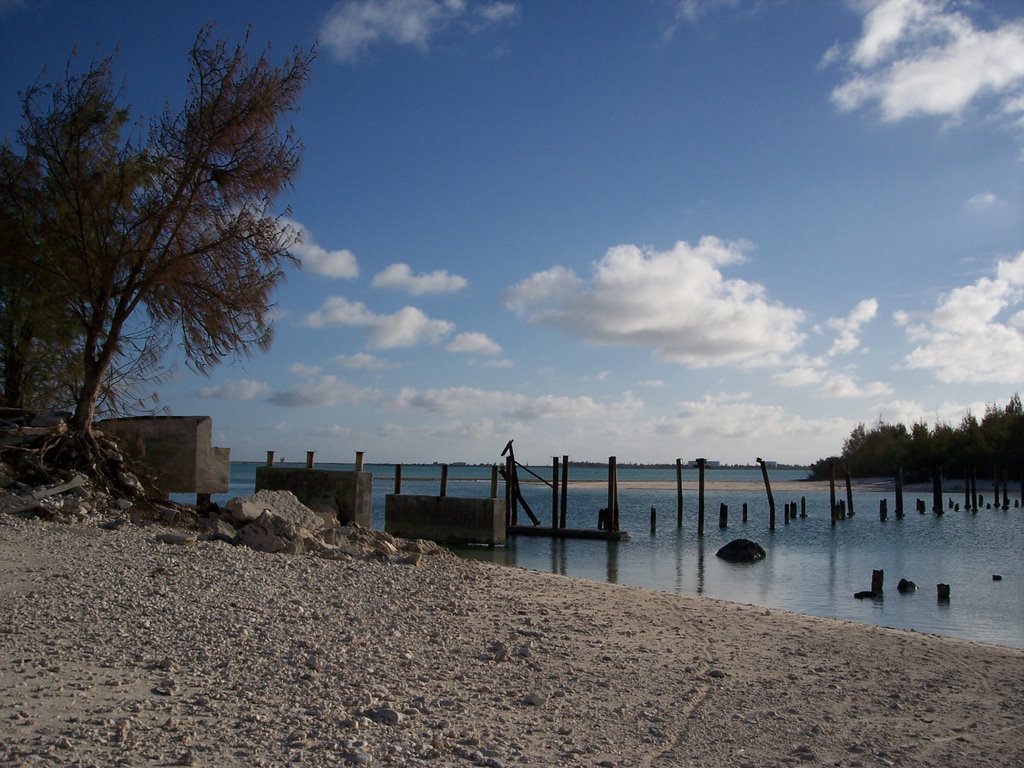
When the wooden bridge was destroyed, much of the infrastructure on Peale
Island was destroyed by typhoon Ioke, a category FIVE hurricane.
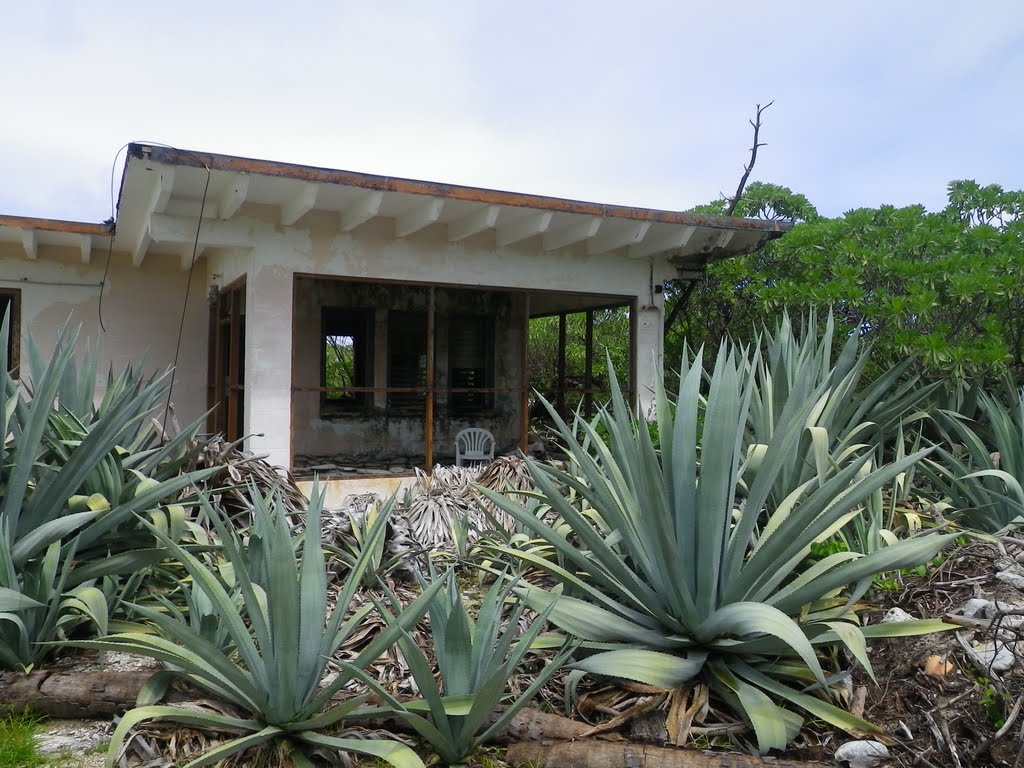
This was the Thai Temple before the typhoon destroyed it. It was located
next to the bowling alley. Most of the contract workers on the island today are from
Thailand.
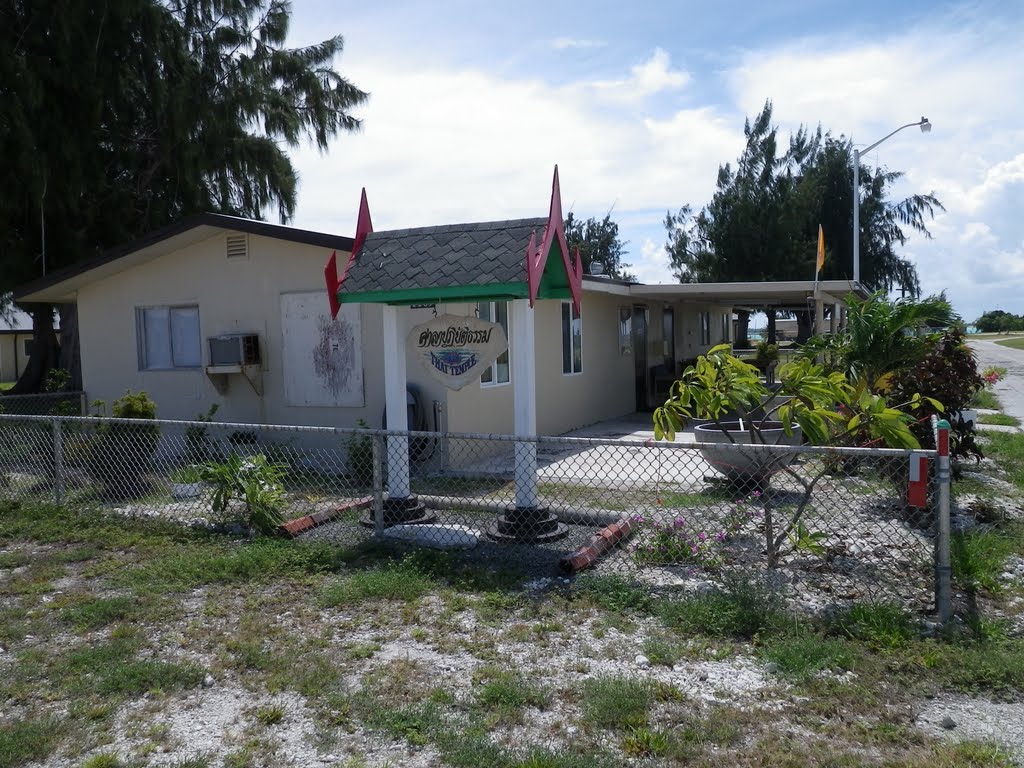
Here are the remains of the Thai Temple after typhoon Ioke passed over the
island in 2006. The USAF evacuated everyone from the island to Hawaii before the
typhoon hit Wake Island.
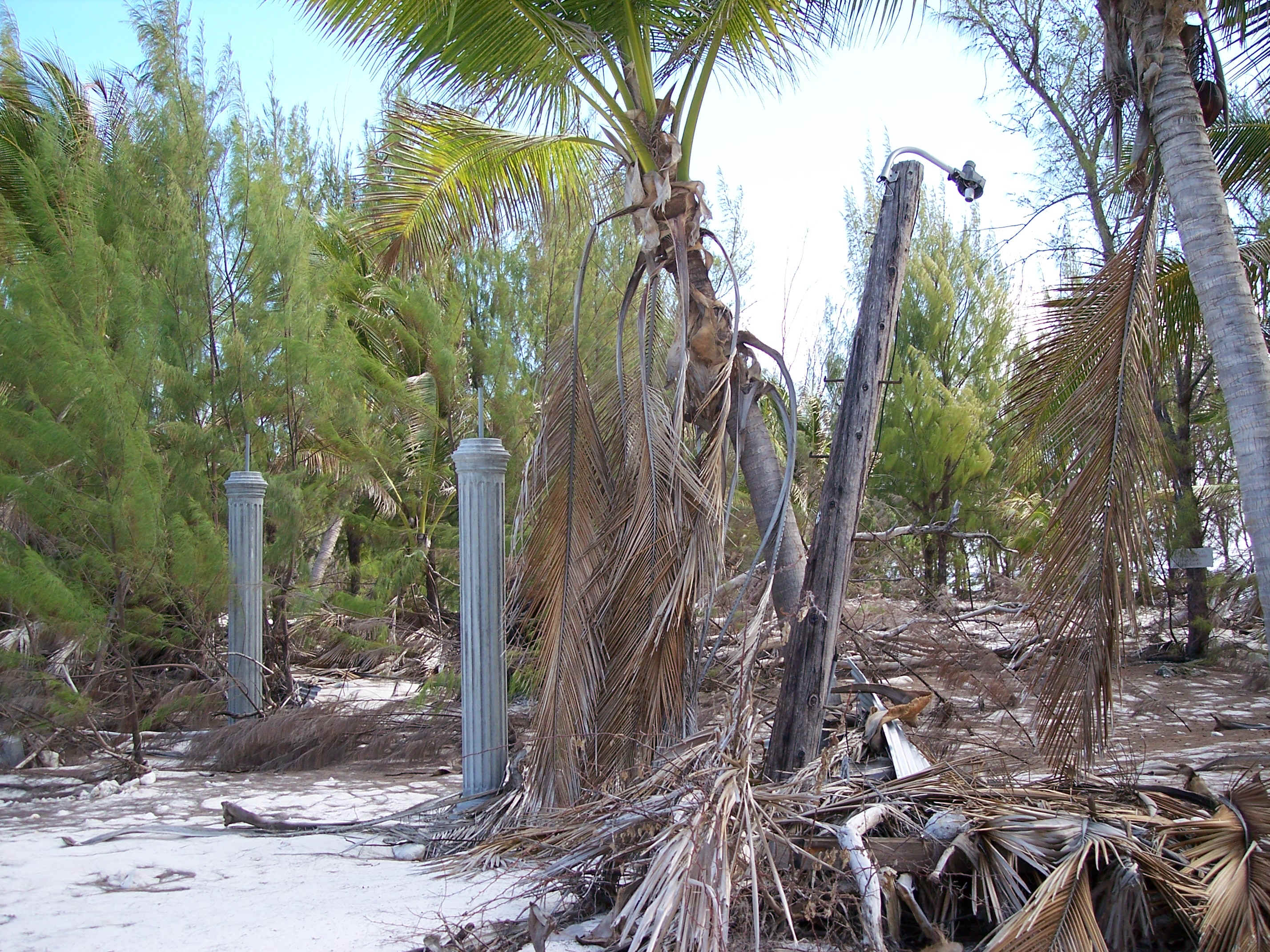
Here is more damage from typhoon Ioke on Wake Island.
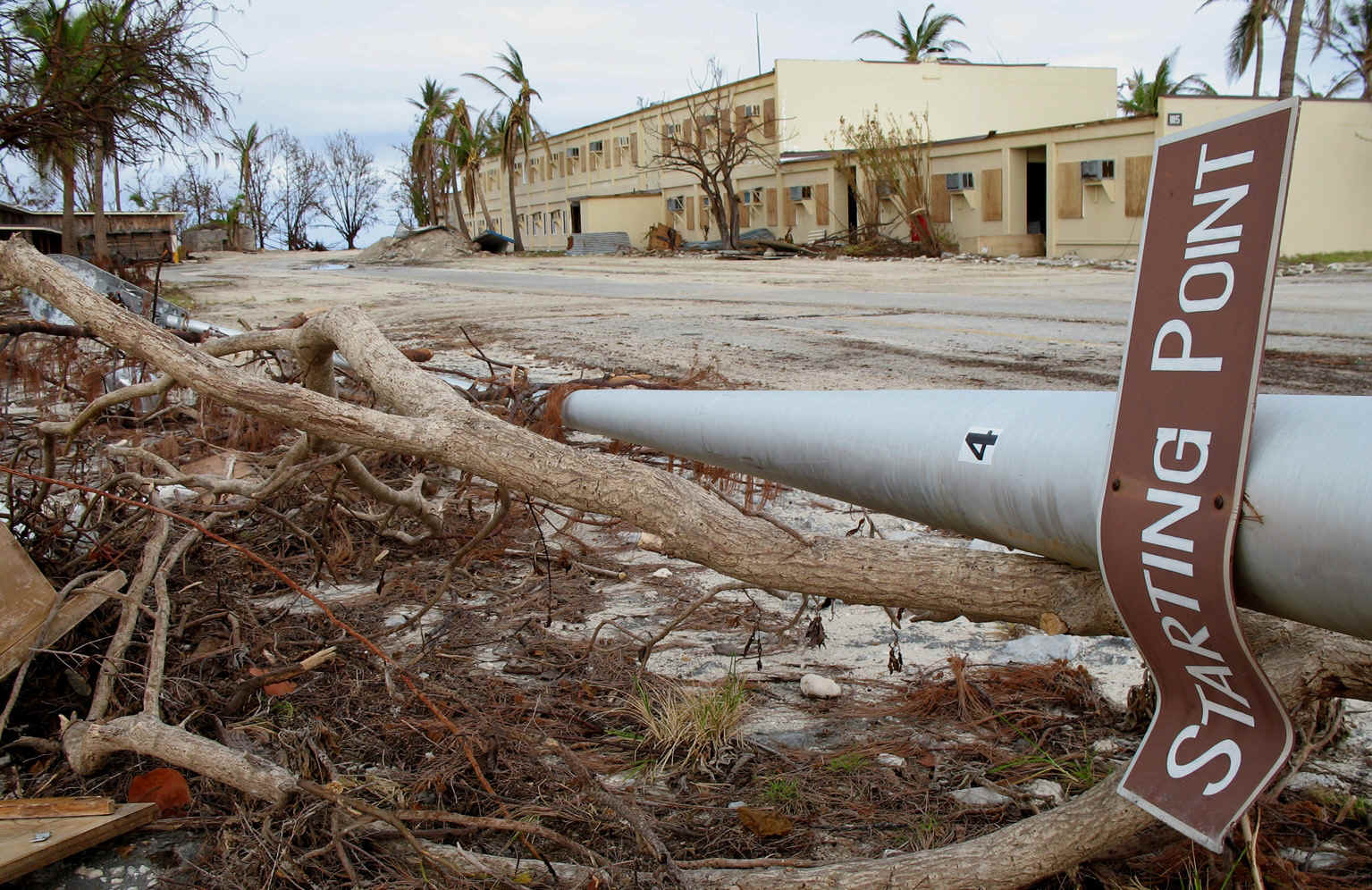
A comparison of Google Earth archive photos shows this building before the
typhoon, and the new building that replaced it after the storm debris was removed.
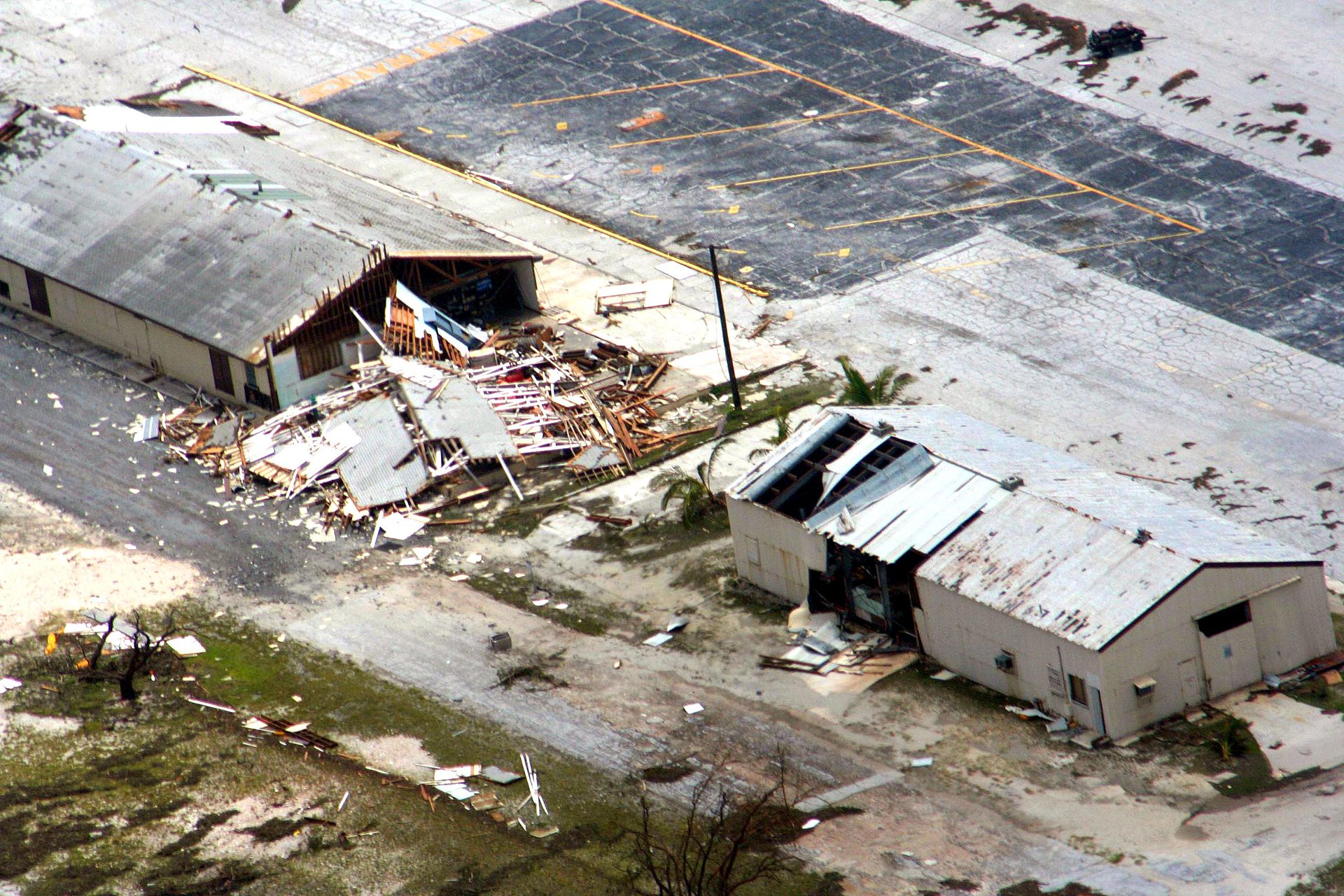
This link will take you on a driving tour of Wake Island on YOU TUBE. When you play the video, look below it and you see a link that says · · · More. Click that "more" link on the you tube page and it will show you a time index of the tour video, with time stamps and naming everything you will see in that video. There is also a video shot by a US Air Force crew on landing approach to Wake Island in a KC-10 "Extender" air tanker. The gateway to "downtown" today has this photo opportunity seen below.
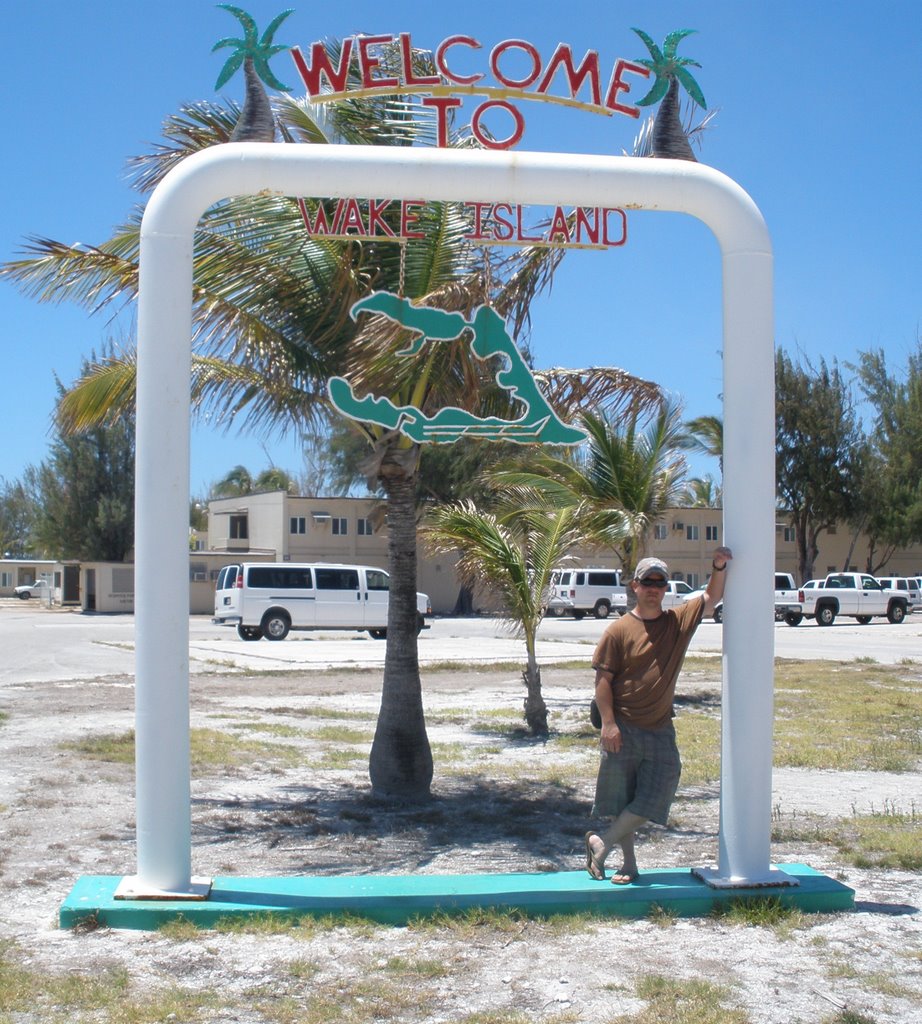
You can learn more about Wake Island at this WEB SITE
including some photos from 1964 when Jerrie was here. There are a number of photos
available via Google, just search for "wake island photos" and on the Trip
Advisor web site. Here is another link that shows some pictures from Wake
Island: http://www.tikiroom.com/tikicentral/bb/viewtopic.php?topic=42289&forum=2
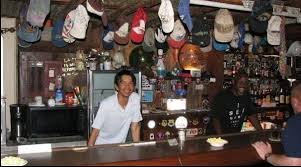
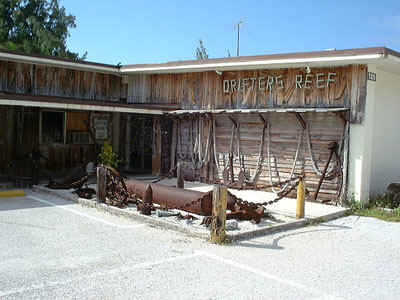
The Wake Island control tower looked like this in March 1990. A number of
buildings on the island sustained damage from typhoons (hurricanes) over the years.

There are a number of World War II artifacts on Wake Island. There is a
museum at the terminal building.
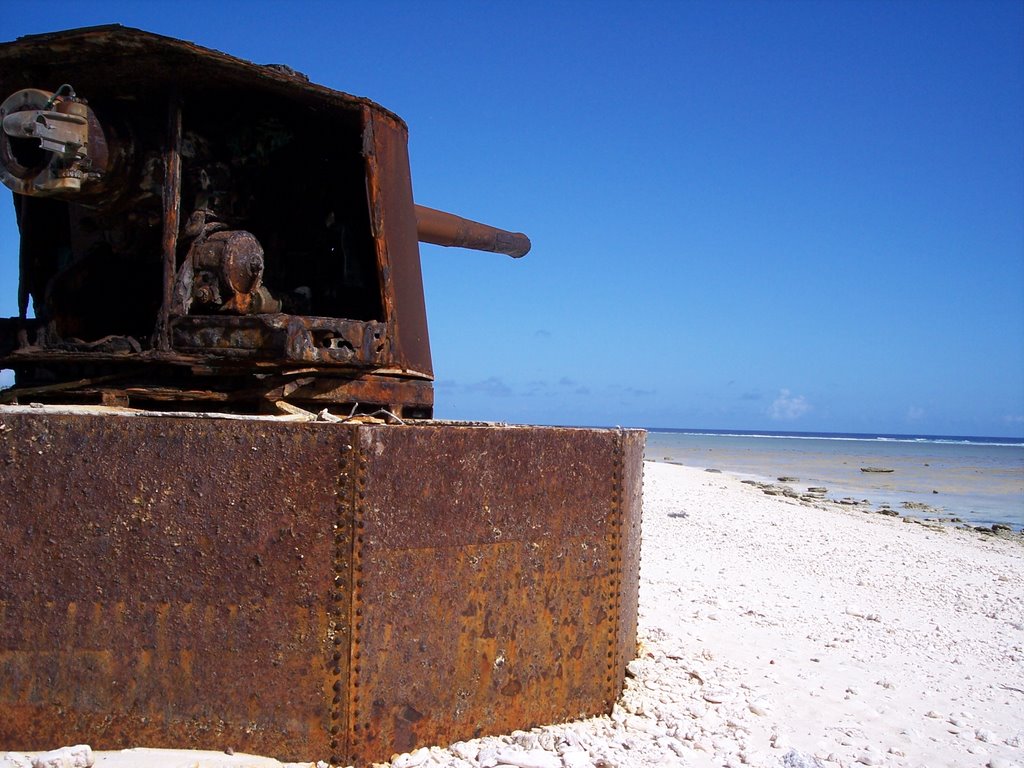
This memorial honors the US Marines defending against the Japanese at the
beginning of World War II.
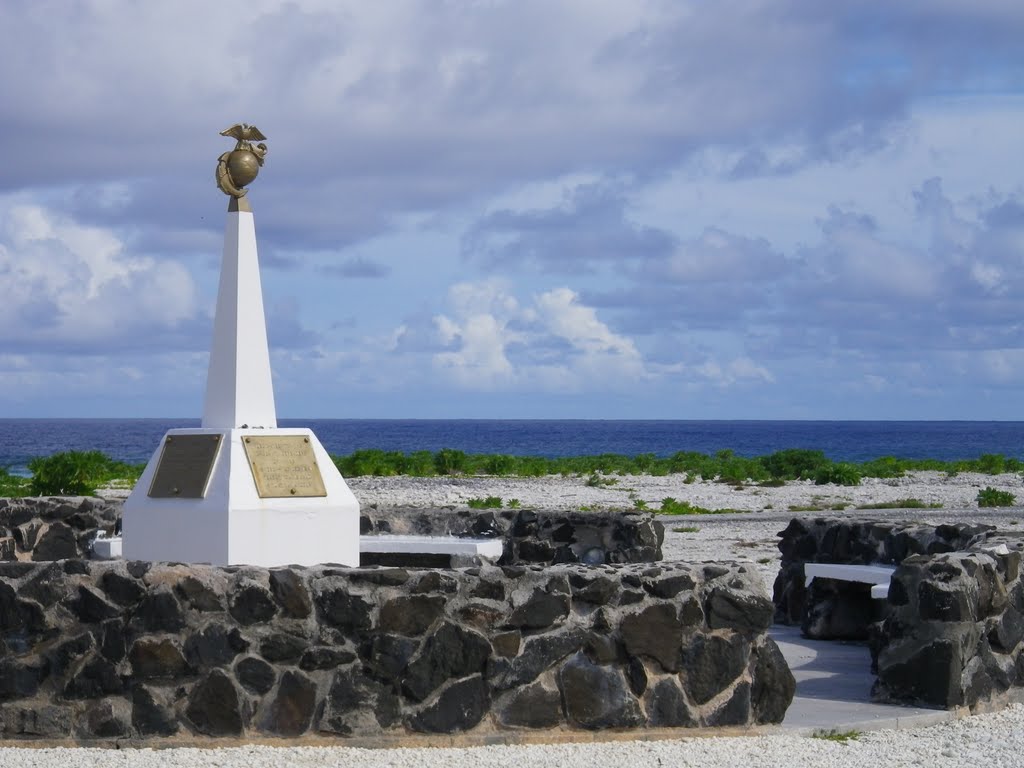
I liked this view of the coral reef atoll and the islands as seen from the East
side of the island. If she had taken off in daylight, this was what she would have
seen during her departure climb before turning on course to Hawaii. The house where
she spent the night was located about half way along the beach at the bottom of this
photo.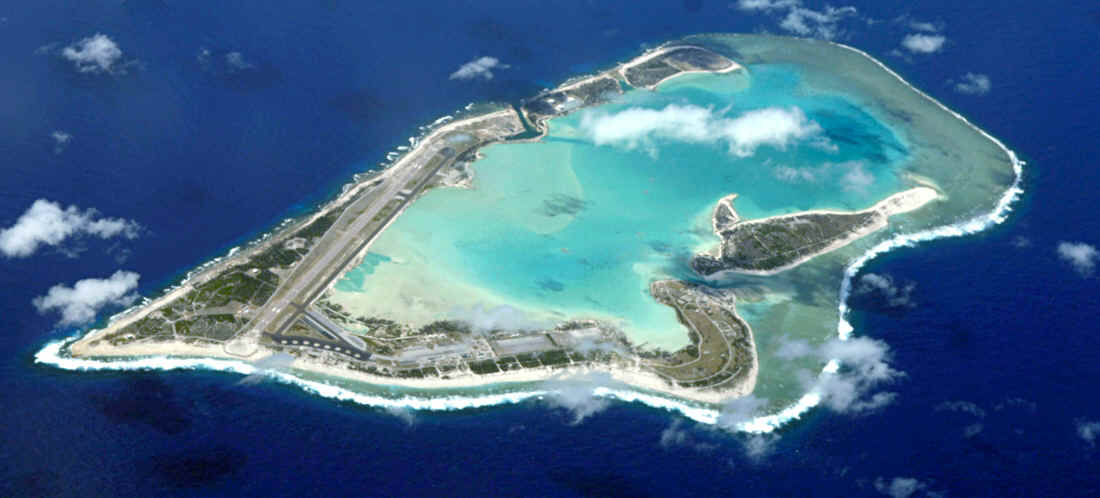
The Pacific Air Forces web site has plenty of photos from Wake Island in the modern era. Follow THIS LINK to see those photos.
| CLICK HERE for PAGE 14 | CLICK for Jerrie Mock MENU | Return to N2PRISE MAIN MENU |